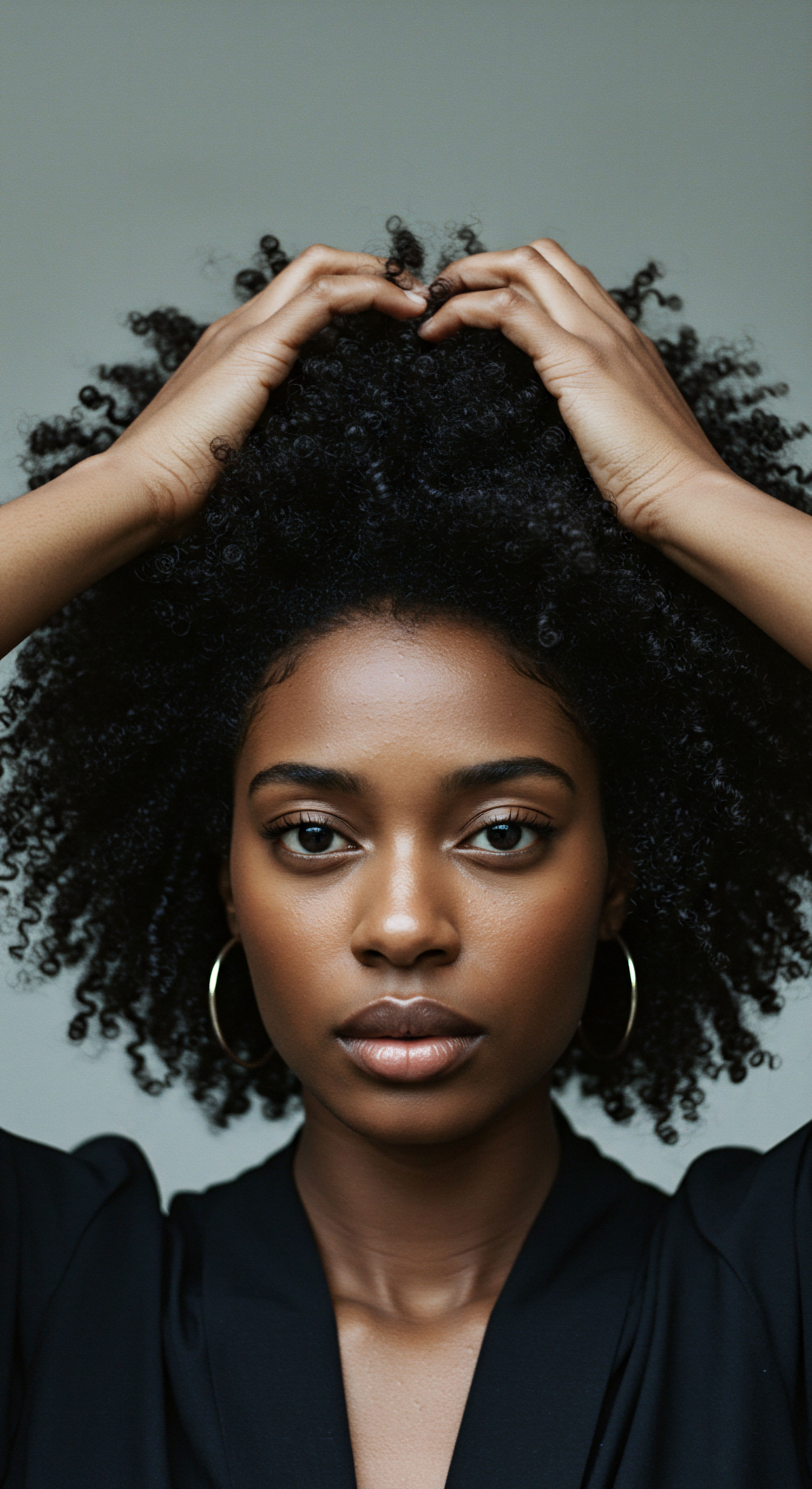
Roots
The quiet descent of evening often ushers in a familiar ritual for those graced with textured hair ❉ the preparation for night. Beyond the cleansing and conditioning, there lies a silent, often understated act—the donning of a head covering. This seemingly simple gesture, however, holds a profound significance, acting as a gentle guardian for delicate strands as they navigate the hours of slumber.
It speaks to a deep, intuitive understanding of hair’s vulnerability, a wisdom passed down through generations, now supported by contemporary science. This protective measure is not merely a modern convenience; it connects us to a timeless practice, acknowledging the intrinsic value and distinct requirements of textured hair.
To truly appreciate the night covering’s purpose, one must first consider the very architecture of textured hair. Unlike straight hair, which typically possesses a more circular cross-section, textured hair exhibits an elliptical or even flattened shape. This unique structural configuration contributes to its characteristic curl pattern, from loose waves to tightly coiled strands. The cuticle, the outermost protective layer of the hair shaft, plays a central role in its resilience.
In textured hair, these cuticle scales tend to lift more readily, particularly at the curves and bends of the strand. This inherent tendency renders textured hair more susceptible to external aggressors, including the friction encountered during sleep. Each individual hair strand, a testament to biological wonder, possesses a complex composition of keratin proteins, bound together to form its distinct shape and strength.
The very architecture of textured hair, with its unique elliptical shape and lifted cuticle scales, predisposes it to increased vulnerability during the night.
The journey of textured hair through history reveals a deep reverence for its care. Across diverse cultures, particularly within the African diaspora, head coverings have long served as more than just adornment or markers of status; they were, and remain, vital tools for hair preservation. Ancient Egyptian frescoes depict intricate braids and covered heads, hinting at practices designed to maintain hair’s health in arid climates. West African traditions saw women meticulously braiding and then covering their hair, shielding it from dust, sun, and the rigors of daily life.
This historical continuum underscores a collective wisdom regarding hair’s delicate nature, recognizing the need for consistent, mindful protection. The practices were not arbitrary; they were rooted in an understanding of environmental impact and the physical demands placed upon hair.
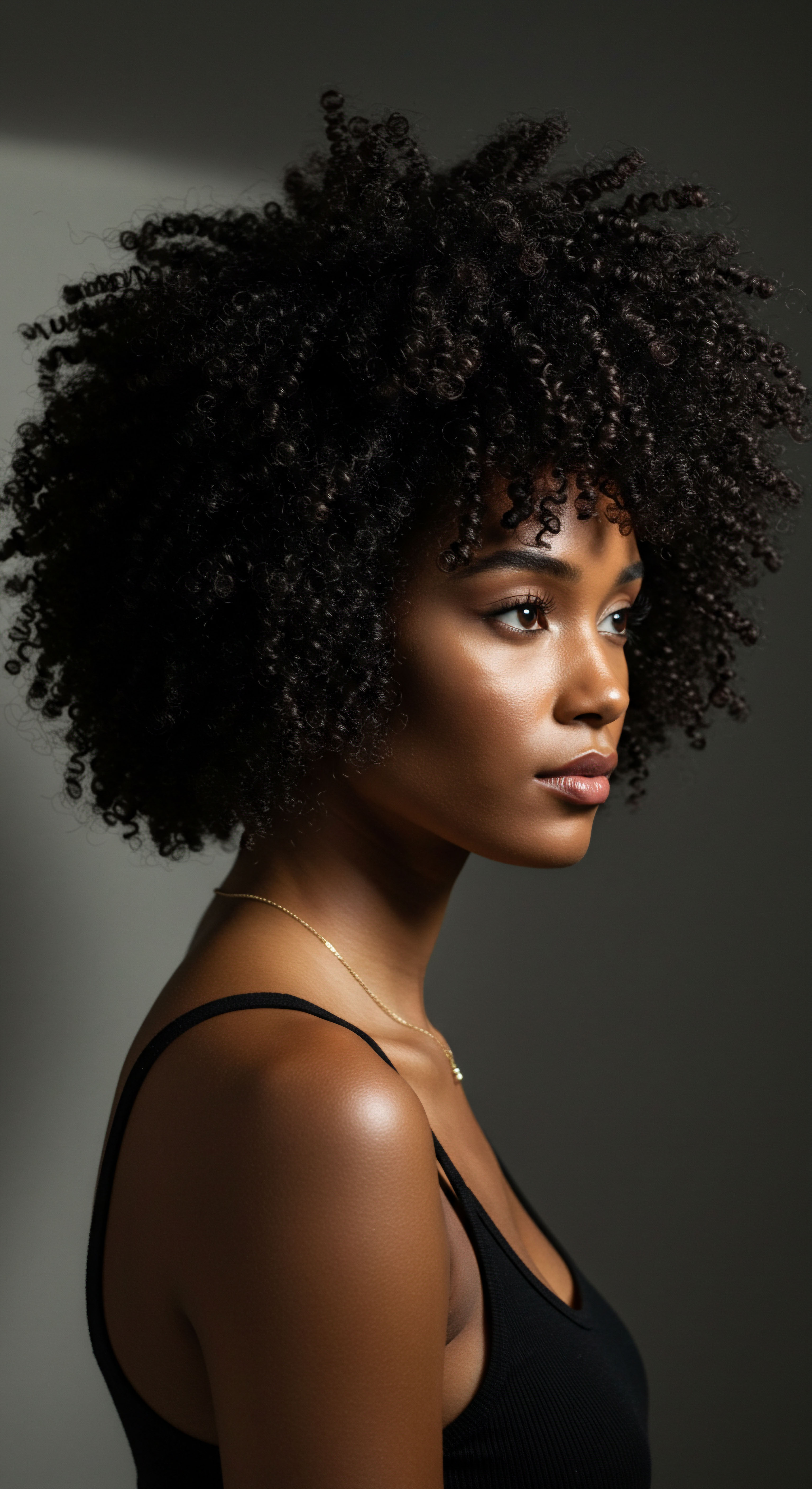
The Hair Shaft’s Delicate Armor
The hair shaft itself, though seemingly robust, is a delicate structure. The cuticle, composed of overlapping cells, functions like tiny shingles on a roof, protecting the inner cortex and medulla. When these shingles lie flat, hair appears smooth, reflects light, and feels soft. However, mechanical friction, such as rubbing against rough fabrics, can cause these cuticles to abrade and lift.
For textured hair, where the cuticle naturally lifts more at the bends, this vulnerability is amplified. The points of curvature along a coil are stress points, where the cuticle is already under tension. Any additional friction exacerbates this, leading to fraying, splitting, and ultimately, breakage. Understanding this microscopic reality illuminates why a smooth, protective barrier becomes paramount during the hours of rest.
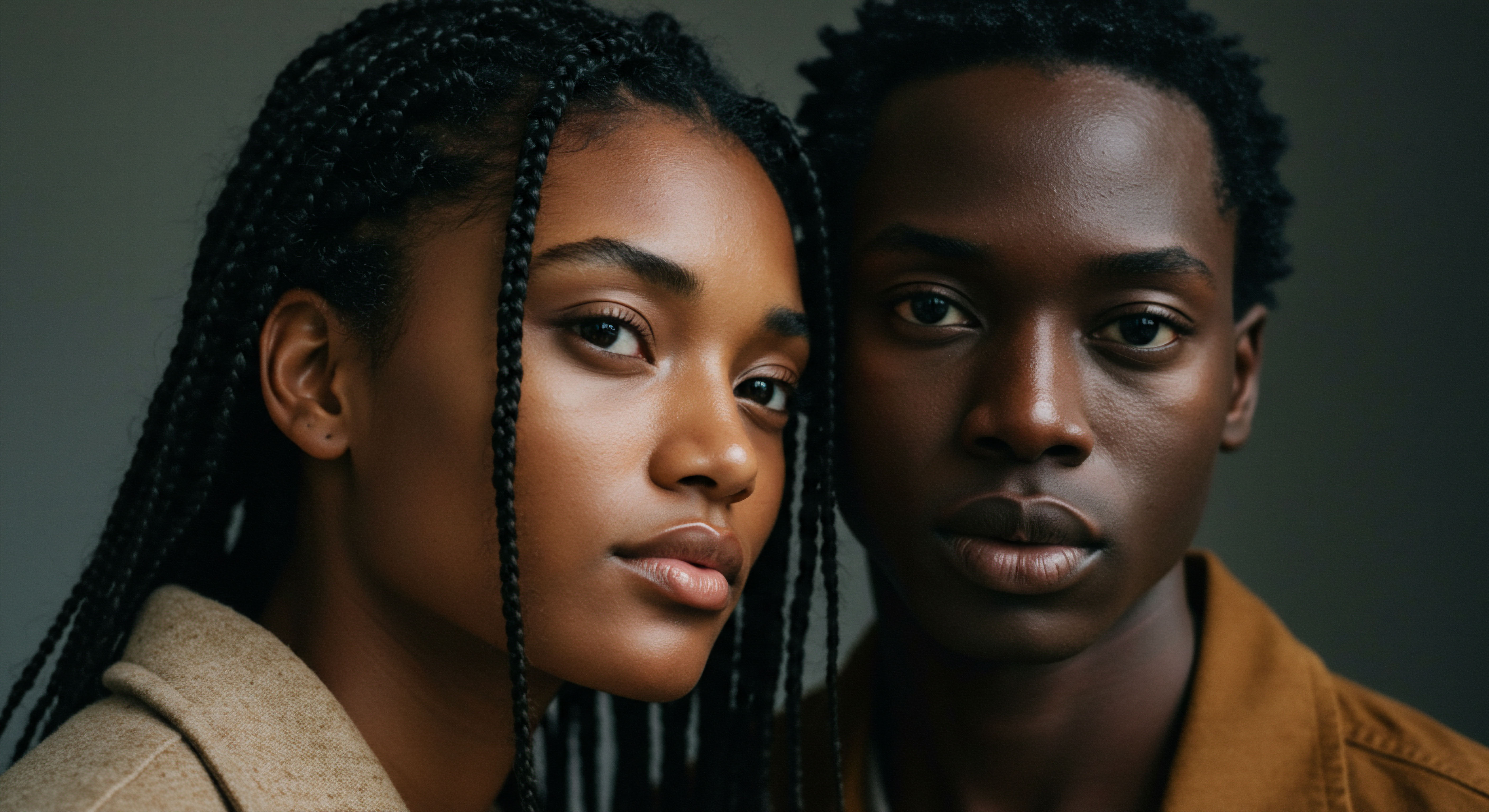
How does Hair Porosity Affect Nocturnal Care?
Hair porosity, a measure of how well your hair absorbs and retains moisture, is intrinsically linked to the condition of the cuticle. Highly porous hair, with its more open cuticle layers, readily absorbs moisture but just as quickly releases it. Low porosity hair, conversely, has tightly bound cuticles, making it resistant to moisture absorption but excellent at retaining it once absorbed. During sleep, especially on absorbent surfaces, highly porous hair is particularly susceptible to moisture loss.
The open cuticles allow water molecules to escape into the fabric, leading to dryness and brittleness. A protective covering acts as a humectant barrier, preventing this moisture migration and helping to maintain the hair’s internal hydration levels. For those with low porosity hair, a covering can help to gently warm the scalp, slightly lifting the cuticle to allow for better product penetration from any pre-sleep treatments, while still shielding the hair from physical damage.
- Cuticle protection ❉ Head coverings shield the outermost layer of hair from friction.
- Moisture retention ❉ They create a micro-environment that minimizes water loss from the hair shaft.
- Structural integrity ❉ By reducing abrasion, they help preserve the hair’s inherent shape and strength.

Ritual
As twilight deepens, the preparations for a night’s rest extend beyond mere comfort for those with textured hair; they encompass a deliberate, mindful practice of preservation. This is where the night covering transitions from a simple item to a significant element of a personal care ritual. It is a conscious choice, a gentle declaration of care for one’s coils and curls, ensuring they awaken refreshed and ready to greet the day.
The selection of the right material, the precise way it is donned, and its consistent application become acts of mindful maintenance, deeply intertwined with the hair’s ongoing vitality. This section explores the practical wisdom and applied science behind these nightly customs.
The primary function of a night covering for textured hair is to minimize friction. Cotton pillowcases, while comfortable for the skin, are notorious for their absorbent and somewhat abrasive fibers. As one shifts during sleep, hair rubs against this surface, leading to mechanical damage. This constant rubbing can lift the cuticle, causing frizz, tangles, and ultimately, breakage.
A study published in the Journal of Cosmetic Science, for instance, has demonstrated how different fabric types interact with hair fibers, showing that rougher surfaces cause significantly more cuticle damage and fiber degradation compared to smoother materials. This empirical evidence underscores the profound impact of sleep surfaces on hair health. The smooth surface of materials like silk or satin provides a glide, allowing hair to move freely without snagging or pulling.
A night covering’s primary purpose is to mitigate friction, a crucial defense against the mechanical damage textured hair often sustains during sleep.
Beyond friction, head coverings play a vital role in moisture management. Textured hair, by its very nature, tends to be drier than straighter hair types due to the winding path oils must travel down the hair shaft. Environmental factors, such as dry indoor air, further exacerbate this. During sleep, open cuticles can allow precious moisture to evaporate into the surrounding atmosphere or be absorbed by a cotton pillowcase.
A silk or satin bonnet or scarf creates a humid microclimate around the hair, effectively sealing in moisture from conditioners, leave-ins, or natural oils applied before bed. This prevents the hair from drying out overnight, keeping it supple and less prone to brittleness and breakage.

Selecting the Ideal Nocturnal Shield
The choice of material for a night covering is paramount. Not all fabrics offer the same protective benefits.
- Silk ❉ Revered for its incredibly smooth surface and natural protein structure, silk causes minimal friction and does not absorb moisture from the hair. Its gentle touch allows hair to glide effortlessly, preserving curl patterns and preventing tangles.
- Satin ❉ A synthetic alternative, satin offers a similar smooth surface to silk, making it an excellent choice for reducing friction. While it may not possess the same natural breathability as silk, its effectiveness in preventing hair damage is widely recognized.
- Bamboo ❉ Emerging as a sustainable option, bamboo fabric offers a soft, smooth texture that is gentle on hair. It also possesses natural moisture-wicking properties, which can be beneficial for scalp health while still being less absorbent than cotton.
Cotton, while a common fabric, is generally discouraged for direct contact with textured hair during sleep due to its high absorbency and rougher fibers. Even if a pillowcase is made of cotton, wearing a silk or satin covering creates the necessary barrier.

What Makes Silk Superior to Cotton for Hair Protection?
The fundamental difference between silk and cotton, when it comes to hair protection, lies in their fiber structure and absorbency. Cotton fibers are short, coarse, and highly absorbent. Under a microscope, cotton appears as a collection of uneven, somewhat jagged strands. As hair rubs against a cotton pillowcase, these fibers create microscopic snags, leading to friction and abrasion.
Furthermore, cotton readily absorbs moisture, drawing out the natural oils and applied products from the hair, leaving it dry and susceptible to breakage. Silk, conversely, is composed of long, smooth, continuous protein fibers. Its surface is exceptionally smooth, allowing hair to glide over it without resistance. This significantly reduces friction, minimizing cuticle damage, frizz, and tangles.
Additionally, silk is far less absorbent than cotton, meaning it preserves the hair’s hydration and natural moisture balance. The difference is akin to sliding across a polished floor versus dragging something across sandpaper; the outcome for delicate hair strands is markedly different.
The practical application of these coverings also forms part of the ritual. Whether one opts for a bonnet, a scarf, or a pillowcase, consistency is key. For those with longer or denser hair, gently gathering the hair into a loose pineapple or braids before covering can further protect the ends and maintain style integrity. This thoughtful preparation ensures that the hair is not only shielded from friction but also maintained in a state that reduces tangling and preserves the chosen style for the following day, minimizing the need for excessive manipulation.
| Material Silk |
| Friction Reduction Excellent |
| Moisture Retention Excellent |
| Breathability High |
| Material Satin |
| Friction Reduction Excellent |
| Moisture Retention Very Good |
| Breathability Medium |
| Material Bamboo |
| Friction Reduction Very Good |
| Moisture Retention Good |
| Breathability High |
| Material Cotton |
| Friction Reduction Poor |
| Moisture Retention Poor |
| Breathability High |
| Material Silk and satin offer superior protection for textured hair due to their low friction and moisture-preserving qualities. |
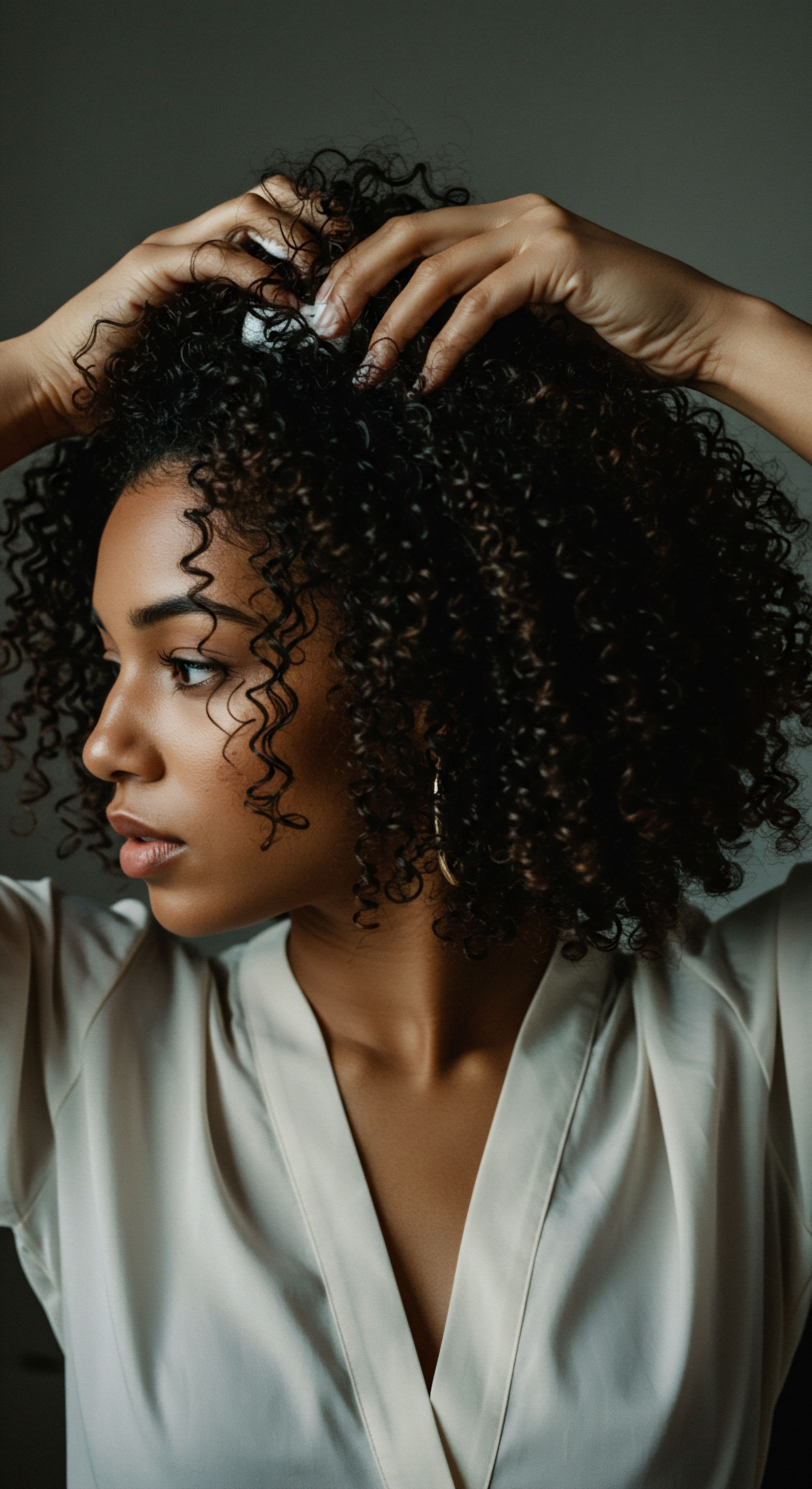
Relay
Stepping beyond the immediate practicalities, the role of head coverings in protecting textured hair at night opens a broader discourse, one that intertwines biological realities with deep cultural currents and the very psychology of self-care. It prompts a deeper inquiry into how these seemingly simple accessories function as conduits for maintaining not only physical hair health but also a sense of personal well-being and cultural connection. The nuanced interplay of environmental factors, hair’s inherent vulnerabilities, and the historical responses to these challenges reveal a complex, interconnected story that merits a more profound examination.
The science of tribology, the study of friction, wear, and lubrication, offers a compelling lens through which to understand the mechanics of nocturnal hair damage. Hair fibers, especially those with an elliptical cross-section and pronounced bends, experience significant contact points when pressed against a surface. The microscopic asperities (roughness) of common pillowcase materials, such as cotton, create shear forces that abrade the hair’s cuticle. This constant, repetitive mechanical stress leads to cumulative damage.
Researchers have utilized scanning electron microscopy to visualize the extent of cuticle lifting and chipping on hair fibers exposed to different levels of friction. The visual evidence is stark ❉ hair strands that have experienced significant friction appear frayed and damaged, a stark contrast to the smooth, intact cuticles of protected hair. This micro-level degradation is the silent antagonist of length retention and hair vitality.
Tribological principles confirm that friction from common sleep surfaces leads to cumulative cuticle damage in textured hair.
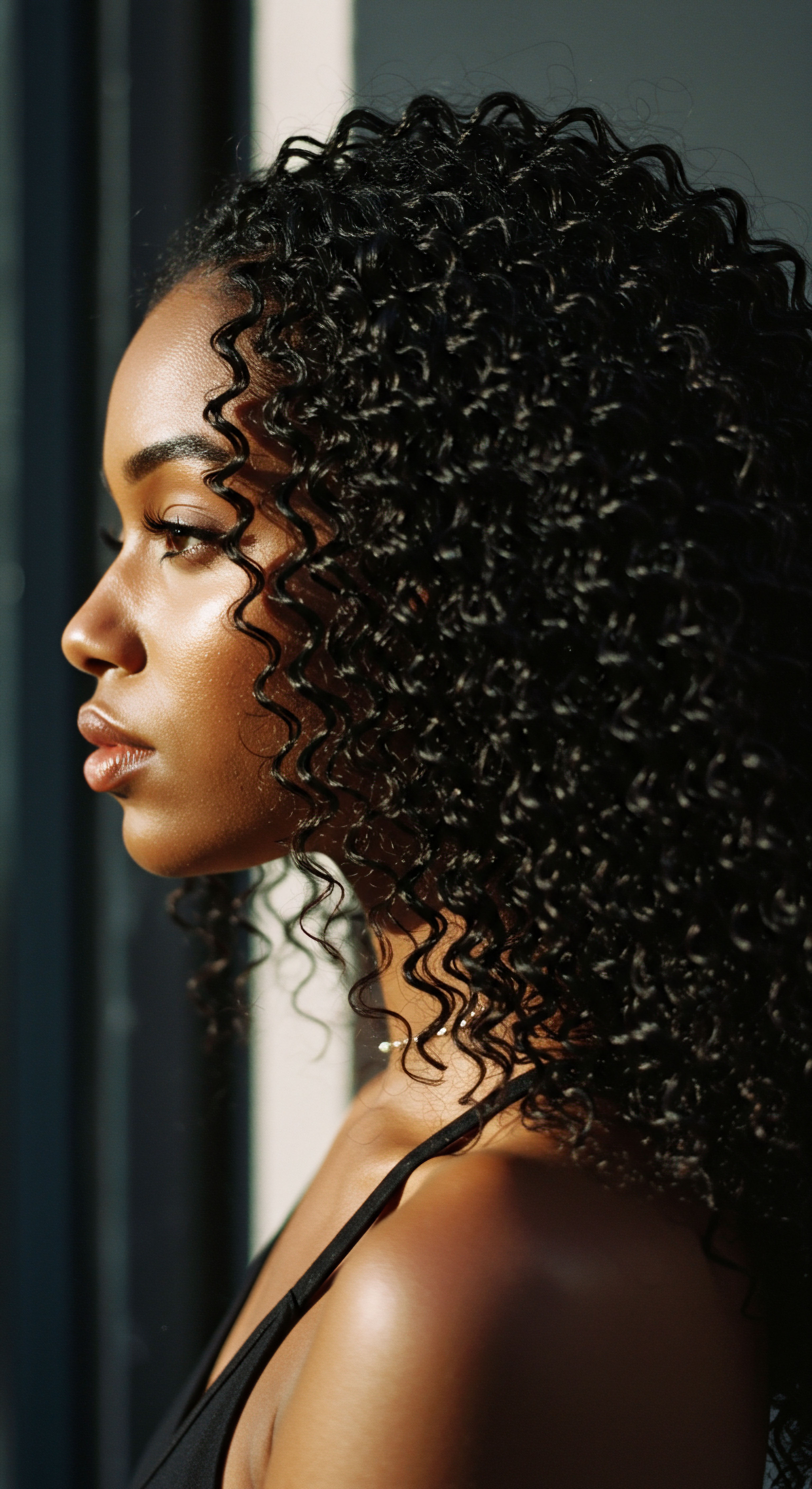
Beyond the Physical Hair Integrity
The conversation surrounding head coverings extends beyond purely physical protection. For generations, head coverings have held profound cultural significance within communities with textured hair. From the intricate headwraps of West Africa, symbolizing status, spirituality, and identity, to the practical necessity of protecting hair during labor or sleep, these coverings are imbued with meaning. The act of covering one’s hair at night can be seen as a continuation of this legacy, a quiet acknowledgement of ancestral wisdom and a connection to practices that affirm the beauty and distinctiveness of textured hair.
It is a tangible link to a history where hair was not merely an aesthetic feature but a repository of identity and resilience. This cultural continuity provides a deeper layer of meaning to the nightly ritual, transcending mere hair care to become an act of self-reverence.

How does Hair Protection during Sleep Influence Long-Term Hair Health and Growth?
Long-term hair health and growth are inextricably linked to minimizing breakage and maintaining the integrity of the hair shaft. Hair grows from the follicle, and its length is determined by the anagen (growth) phase. However, if the hair breaks off at the ends faster than it grows from the root, visible length retention becomes challenging. Nocturnal protection directly addresses this by significantly reducing the primary cause of mechanical breakage ❉ friction.
When hair is shielded by a smooth surface, the cuticle remains intact, preventing the progressive damage that leads to split ends and mid-strand fractures. A consistent routine of night protection contributes to a healthier hair growth cycle by allowing the hair to reach its full potential length without being prematurely shortened by breakage. This consistent preservation of the hair’s structural integrity over months and years allows for observable increases in length and density, fostering a vibrant, robust mane.
Consider the psychological impact of waking with hair that feels soft, detangled, and less prone to frizz. This daily experience can significantly influence an individual’s self-perception and confidence. When hair is consistently protected, the morning routine becomes less about battling tangles and more about styling and affirming its natural beauty. This reduction in daily hair stress, often associated with managing damage, contributes to a more positive relationship with one’s hair.
It fosters a sense of control and empowerment, transforming a potentially frustrating daily challenge into a predictable, nurturing ritual. This emotional resonance underscores the holistic benefits of night coverings, extending their utility beyond the purely physical realm into the sphere of personal well-being.
| Hair Health Marker Frizz |
| Unprotected Sleep High incidence due to cuticle lifting |
| Protected Sleep (Silk/Satin) Minimal due to reduced friction |
| Benefit of Protection Smoother hair, defined curl pattern |
| Hair Health Marker Breakage |
| Unprotected Sleep Increased due to mechanical stress |
| Protected Sleep (Silk/Satin) Significantly reduced |
| Benefit of Protection Improved length retention, density |
| Hair Health Marker Dryness |
| Unprotected Sleep Accelerated moisture loss to fabric |
| Protected Sleep (Silk/Satin) Moisture retention within hair |
| Benefit of Protection Increased suppleness, elasticity |
| Hair Health Marker Tangles |
| Unprotected Sleep Frequent knotting from friction |
| Protected Sleep (Silk/Satin) Reduced due to smooth glide |
| Benefit of Protection Easier detangling, less manipulation |
| Hair Health Marker Consistent night protection significantly improves hair health by mitigating frizz, breakage, dryness, and tangles. |
The choice of a head covering material also carries implications for scalp health. While the focus is often on the hair shaft, a healthy scalp is the foundation for robust hair growth. Breathable materials, like silk, allow for air circulation, preventing the buildup of heat and moisture that can create an environment conducive to scalp issues.
Conversely, non-breathable synthetic materials, if used improperly or for extended periods, could potentially lead to discomfort or even minor scalp irritation for some individuals. The consideration of both hair and scalp health underscores the comprehensive nature of effective nocturnal hair care, recognizing the interconnectedness of the entire hair ecosystem.

Reflection
The journey through the subtle yet profound impact of head coverings on textured hair at night reveals a story far richer than simple preservation. It speaks to a deep respect for hair’s intrinsic nature, a quiet understanding of its vulnerabilities, and a celebration of its resilience. This practice, woven through generations and now affirmed by scientific inquiry, transforms the hours of sleep into a period of gentle restoration, allowing each coil and curl to rest in serenity. It is a testament to the power of mindful care, where small, consistent actions culminate in vibrant health and a deeper connection to one’s own unique beauty.

References
- Robins, J. (2012). The Science of Hair Care. Allured Business Media.
- Dawber, R. P. R. & Van Neste, D. (2004). Hair and Scalp Diseases ❉ Medical, Surgical, and Aesthetic Management. Taylor & Francis.
- Khanna, S. (2018). Hair Care ❉ A Comprehensive Guide. Nova Science Publishers.
- Marsh, J. (2017). Curly Like Me ❉ The Handbook for the Natural Hair Journey. Avery.
- Boehringer, C. (2010). Hair Structure and Chemistry Simplified. Milady.
- Gray, J. (2009). The Science of Black Hair ❉ A Comprehensive Guide to Textured Hair Care. J. Gray Publishing.
- Goldsmith, L. A. (2012). Fitzpatrick’s Dermatology in General Medicine. McGraw-Hill Medical.
- Draelos, Z. D. (2010). Hair Cosmetics ❉ An Overview. In Cosmetic Dermatology ❉ Products and Procedures. Wiley-Blackwell.